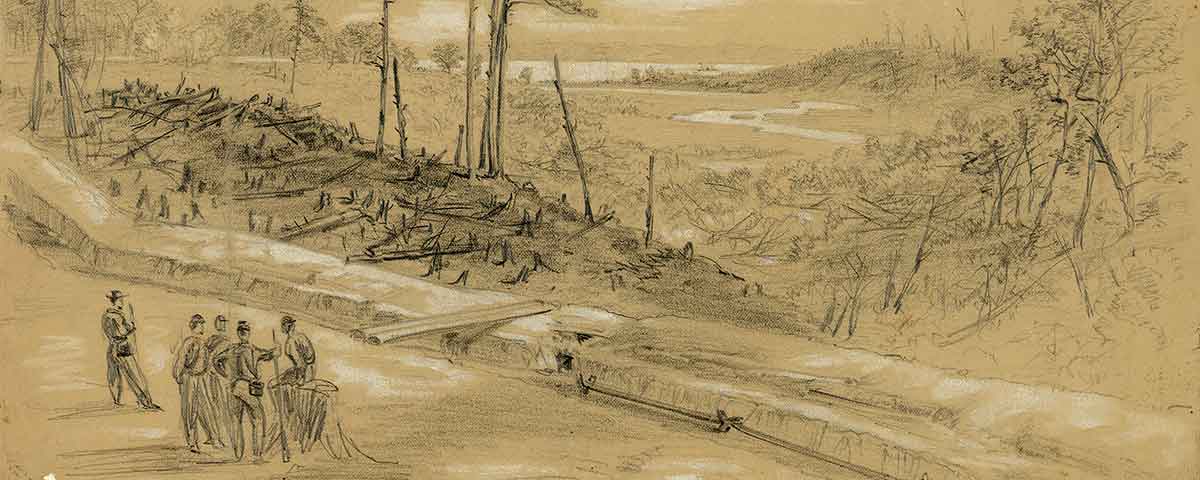
Joan E. Cashin penned a biography of Varina Howell Davis in 2006. During that research and other projects, she documented the devastation of the Southern landscape. The result is The Ohio State University historian’s most recent work, War Stuff: The Struggle for Human and Environmental Resources in the American Civil War, which explores the conduct of both Union and Confederate armies and the impact on local civilians. Cashin discovered intense struggles over food, timber, and farm resources—a Civil War more marked by early scarcity and devastation than commonly remembered.
CWT: Did Federals and Confederates treat civilians differently?
JC: Both armies assumed that their needs came first—the phrase was “military necessity”—and Union and Confederate troops behaved more or less the same. They took resources as needed right from the beginning up to the end of the war.
CWT: Yet the Union Army issued regulations in both 1862 and 1863.
JC: John Pope, a U.S. general and commander of the Army of Virginia, issued orders in July 1862 making it official that troops could live off the land. Whatever they took from civilians—food, house, whatever—the civilians would be given paperwork by the office and there was a promise of future reimbursement. The Union Army often disregarded those promises, however, although there were always some officers and quartermasters trying to do the paperwork. A lot of officers complain frequently that they can’t get men to follow orders. The men were freelancing. If they were hungry, they disappeared into the night to get what they wanted.
CWT: What about the Lieber Code?
JC: Francis Lieber was a refugee from Europe who ended up in South Carolina where he was a professor and also a slaveowner. In the 1850s he got more uneasy with the political climate and apparently with slave-owning itself. He went to New York and threw himself into the war effort when it broke out. He wanted to create a guide for conduct for the Union Army and wrote up the Lieber Code. By the time his code was issued in spring 1863, both armies had already assumed from the very beginning they had the right to take what they needed. I argue Pope and Lieber didn’t have all that much impact on the ground level.
CWT: Talk about timber destruction.
JC: I was flabbergasted that both armies saw the forest as a resource that they could exploit and they practiced deforestation on a massive scale. They also took down fences and, when they could, took down private homes to get the wood. That especially surprised me because men in both armies were often farmers or farmers’ sons. Many of them understood the impact of what they were doing, the impact on civilians, and some clearly felt bad about it. But for the most part, the average soldier, whether a private or an officer, assumed that the needs of the military came first. So if they end up taking down all the wood in a Virginia county, then that’s just the way it was going to be.
CWT: You argue that “hard war” is conducted as early as 1861.
JC: There isn’t a progression or a turning point the way some other historians have said. In the spring and summer of 1861, barns were being cleaned out, homes were being taken over, and sometimes being taken down. This goes on throughout the conflict. By 1864, the infrastructure, broadly speaking, was breaking down.
CWT: Your research puts Sherman’s March in a different light.
JC: It really surprised me that the Confederate soldiers could be just as rapacious as Union soldiers. I give a qualified defense for Sherman. I think his March to the Sea has been overemphasized as an aberration and I don’t think his army’s behavior was that different from other armies, including Confederate armies. These massive populations of men in uniform needed resources and a lot of them did more or less what Sherman’s army did.
CWT: The starvation deaths in 1865 Columbia, S.C., are striking.
JC: That is something that historians have kind of shied away from because it’s a horrible thing to think about: American citizens starving to death in a time of war. Soldiers in both armies said this, and they were not exaggerating. Soldiers in both armies will share their rations with civilians or try to stop their comrades from taking all the food on a farm. But these massive armies have their own momentum. It is like a juggernaut passing through a region, and individual actions of charity and generosity cannot do much overall to stop the large scale suffering.
CWT: You mention some extraordinary scenes: a house with three dead people floating down the river, and a river of resin on fire.
JC: Strange, surreal, and astonishing things happened, and I argued that they happened more often in the last year of the war, including houses that were unmoored and were floating down the river, flaming wagons left behind in the road. People described buildings on fire, and communities burning down. It is as if the material, the physical world itself, is breaking up.
CWT: How does your research affect the conventional narrative of the war?
JC: The memory of the war has been distorted. The Lost Cause mythology, created after the war, demonizes the Federal Army, especially Sherman, and blames Union troops for plundering and pillage as if the Confederate Army was blameless. The evidence is overwhelming that both armies took what they needed. There are always pro-Union white Southerners out there who are willing to help the Federal Army when they can. Both armies know that. They are aware of the division within the white Southern population and that gets deleted from the narrative after the war. It is important to have a more realistic memory of what happened. There were depredations by Southern troops, and there were white southerners who were against secession and against the war from the very beginning.
CWT: You write that 40 percent of white southerners in the slave states opposed secession.
JC: When the war breaks out, some of those people give in. Some decide this is the new reality. Some leave the South because they can’t support the Confederacy, but a lot of them stay. Those people are on the scene throughout the war. Both armies know there are pro-Union white Southerners. It’s ironic. The Confederate troops seem more aware of their existence than people today. Soldiers in the gray uniforms were fully aware that there were white Southerners who sympathized with the other army. Many people today have forgotten that those people are part of the war narrative. ✯
Interview conducted by Senior Editor Sarah Richardson





